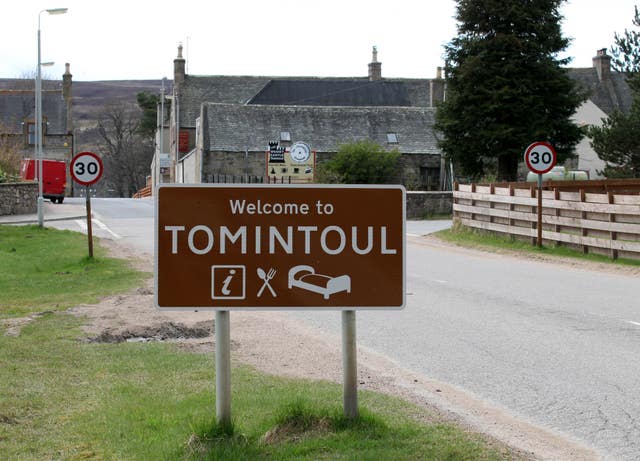
The King is to visit the highest village in highland Scotland which has been working to reverse economic problems.
Charles, who is on his summer break at the Balmoral estate in Aberdeenshire, will visit Tomintoul in the Cairngorms National Park and will be welcomed by primary school children and community stalwarts.
READ MORE: Anniversary of Queen's death to be remembered by King
The settlement dates from the 1750s, and now has 750 villagers after the community worked to address socio-economic problems including lack of development, an ageing population, and unaffordable housing.
In 2012, the community had less than 400 villagers and faced multiple hospitality businesses closing, but rallied to address the issues.
 The King will visit Tomintoul (Andrew Milligan/PA)
The King will visit Tomintoul (Andrew Milligan/PA)
As a result it formed the Glenlivet Development Trust, which instigated a £3.3 million energy-efficient housing development, the Auld School Close, on the site of a derelict school.
The Development Trust bought the land and now 12 affordable energy-efficient homes are being built, which Charles will visit.
READ MORE: The hidden benefits of hanging King Charles in your school
It also bought a former museum and turned it into the Tomintoul and Glenlivet Discovery Centre, where Charles will be shown a coat believed to have belonged to a Customs Officer in the 1820s during the era of whisky smuggling.
The centre also houses the Tomintoul and Glenlivet Community Larder, which operates as a food bank.
Charles will be welcomed by children from Tomintoul Primary School and will speak to board members of the Development Trust, as well as contractors and council workers.



Why are you making commenting on The Herald only available to subscribers?
It should have been a safe space for informed debate, somewhere for readers to discuss issues around the biggest stories of the day, but all too often the below the line comments on most websites have become bogged down by off-topic discussions and abuse.
heraldscotland.com is tackling this problem by allowing only subscribers to comment.
We are doing this to improve the experience for our loyal readers and we believe it will reduce the ability of trolls and troublemakers, who occasionally find their way onto our site, to abuse our journalists and readers. We also hope it will help the comments section fulfil its promise as a part of Scotland's conversation with itself.
We are lucky at The Herald. We are read by an informed, educated readership who can add their knowledge and insights to our stories.
That is invaluable.
We are making the subscriber-only change to support our valued readers, who tell us they don't want the site cluttered up with irrelevant comments, untruths and abuse.
In the past, the journalist’s job was to collect and distribute information to the audience. Technology means that readers can shape a discussion. We look forward to hearing from you on heraldscotland.com
Comments & Moderation
Readers’ comments: You are personally liable for the content of any comments you upload to this website, so please act responsibly. We do not pre-moderate or monitor readers’ comments appearing on our websites, but we do post-moderate in response to complaints we receive or otherwise when a potential problem comes to our attention. You can make a complaint by using the ‘report this post’ link . We may then apply our discretion under the user terms to amend or delete comments.
Post moderation is undertaken full-time 9am-6pm on weekdays, and on a part-time basis outwith those hours.
Read the rules here